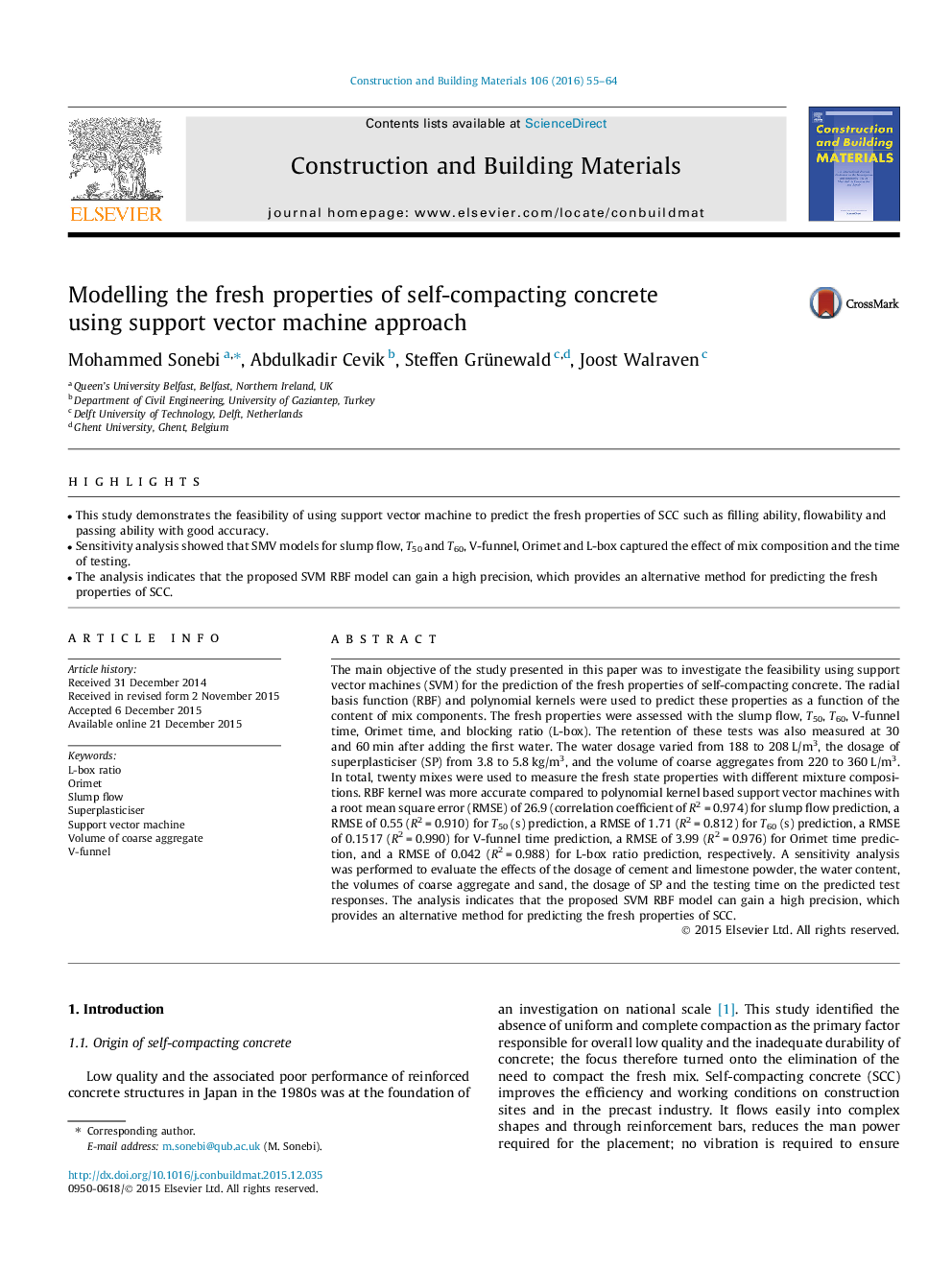| Article ID | Journal | Published Year | Pages | File Type |
|---|---|---|---|---|
| 256468 | Construction and Building Materials | 2016 | 10 Pages |
•This study demonstrates the feasibility of using support vector machine to predict the fresh properties of SCC such as filling ability, flowability and passing ability with good accuracy.•Sensitivity analysis showed that SMV models for slump flow, T50 and T60, V-funnel, Orimet and L-box captured the effect of mix composition and the time of testing.•The analysis indicates that the proposed SVM RBF model can gain a high precision, which provides an alternative method for predicting the fresh properties of SCC.
The main objective of the study presented in this paper was to investigate the feasibility using support vector machines (SVM) for the prediction of the fresh properties of self-compacting concrete. The radial basis function (RBF) and polynomial kernels were used to predict these properties as a function of the content of mix components. The fresh properties were assessed with the slump flow, T50, T60, V-funnel time, Orimet time, and blocking ratio (L-box). The retention of these tests was also measured at 30 and 60 min after adding the first water. The water dosage varied from 188 to 208 L/m3, the dosage of superplasticiser (SP) from 3.8 to 5.8 kg/m3, and the volume of coarse aggregates from 220 to 360 L/m3. In total, twenty mixes were used to measure the fresh state properties with different mixture compositions. RBF kernel was more accurate compared to polynomial kernel based support vector machines with a root mean square error (RMSE) of 26.9 (correlation coefficient of R2 = 0.974) for slump flow prediction, a RMSE of 0.55 (R2 = 0.910) for T50 (s) prediction, a RMSE of 1.71 (R2 = 0.812) for T60 (s) prediction, a RMSE of 0.1517 (R2 = 0.990) for V-funnel time prediction, a RMSE of 3.99 (R2 = 0.976) for Orimet time prediction, and a RMSE of 0.042 (R2 = 0.988) for L-box ratio prediction, respectively. A sensitivity analysis was performed to evaluate the effects of the dosage of cement and limestone powder, the water content, the volumes of coarse aggregate and sand, the dosage of SP and the testing time on the predicted test responses. The analysis indicates that the proposed SVM RBF model can gain a high precision, which provides an alternative method for predicting the fresh properties of SCC.
